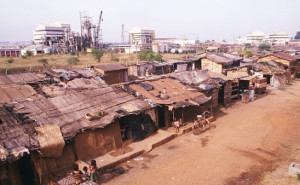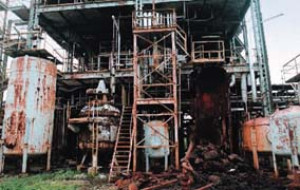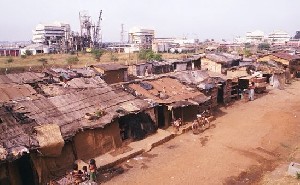At a pesticide manufacturing plant set up in 1969, a release of about 40 tonnes of methyl isocyanate (MIC) and other toxic gases continued for 2 hours during the night of 2nd to 3rd December, subsequent to a runaway reaction caused by the addition of water into a MIC tank. The consequences of this release were uncontrolled due to many safety systems being defective or shunted for purposes of lowering operating costs.
These toxic emanations led to a tremendous number of victims among the local population: between 3,000 and 25,000 deaths, and 170,000 to 800,000 intoxications according to sources. The injured streamed into hospitals which were underequipped and not prepared for such a surge of victims and so were quickly saturated, requiring makeshift installations to be assembled. Due to the company’s lack of communication and a denial regarding the potential presence of hydrogen cyanide in the discharge, physicians faced with extreme symptoms (acute oedema in the lungs, respiratory distress, persistent coughing, ocular lesions, etc.) were hard pressed to identify a suitable treatment.
The on-site storage comprised three 60-m³ (50-tonne) refrigerated stainless steel tanks of liquid MIC connected to 1 exhaust gas washer and 1 flare.
The addition of water in one of the tanks, for reasons never definitively stated, triggered several chain exothermic reactions (including MIC hydrolysis and trimerisation), raising both the temperature (200°C) and pressure (13.79 bar) through gaseous releases and MIC vaporization. The rupture disc and valve protecting the tank’s structural integrity performed as expected: the toxic gases generated were routed to the appropriate treatment facilities. However, the safety systems proved to be defective: refrigeration turned off (06/84), malfunctioning indicators of temperature, pressure and liquid level in the tank, exhaust gas washer out of order (23 October 1984), and an inoperable flare (a few days before the accident). The water curtain, which did not activate until 1 hour after the discharge had begun, lacked sufficient power to dissipate the toxic cloud.
At the end of December, the pesticide production workshop was temporarily restarted in order to remove the MIC supplies still present following the accident. All activity at the site was suspended and the facility left untouched, with a whole array of unresolved problems regarding waste disposal and soil/groundwater pollution.
Initiated in 1987, the judicial hearing underwent several twists and turns. Charged at first with homicide, the 8 defendants (7 Indians and the American company president) benefited from a 1996 decision by the Indian Supreme Court recasting the facts of the case as homicide by negligence, a misdemeanour charge punishable by a maximum 2-year prison term.
In 1989, the site operator signed an agreement with the Indian government: the company paid a $47-million settlement in exchange for dropping all charges.
On 7th June 2010, the Bhopal Criminal Court sentenced the 7 individuals deemed responsible for the disaster (the eight person being dead in the meantime) to a 2-year prison term and a fine of 100,000 rupees (€1,751). They were given leave to appeal and immediately released on bail. A $10,000 (€8,354) fine was imposed on the operator’s Indian subsidiary for negligence. The company’s Managing Director at the time, declared “on the run” by the court, was not specifically named in the verdict.
On 12nd November 2014, the parent company that had acquired in 2001 the subsidiary which owned the plant received a summons to appear before an indian jurisdiction but did not answer the notification. A new audience is planned on 14th March 2015.
This disaster, the worst in the history of the chemical industry, underscores the importance of maintaining efficient technical and organisational safety barriers over the long run, especially in times of economic constraints. It also demonstrates the importance of installation layout, appropriate safety system design, procedures for managing modifications and for controlling urban development, emergency planning and population information dissemination.
The accident has indeed caused a shift in the way that the industry views process safety.
Download the detailed report in .pdf format (2.2 Mb)







